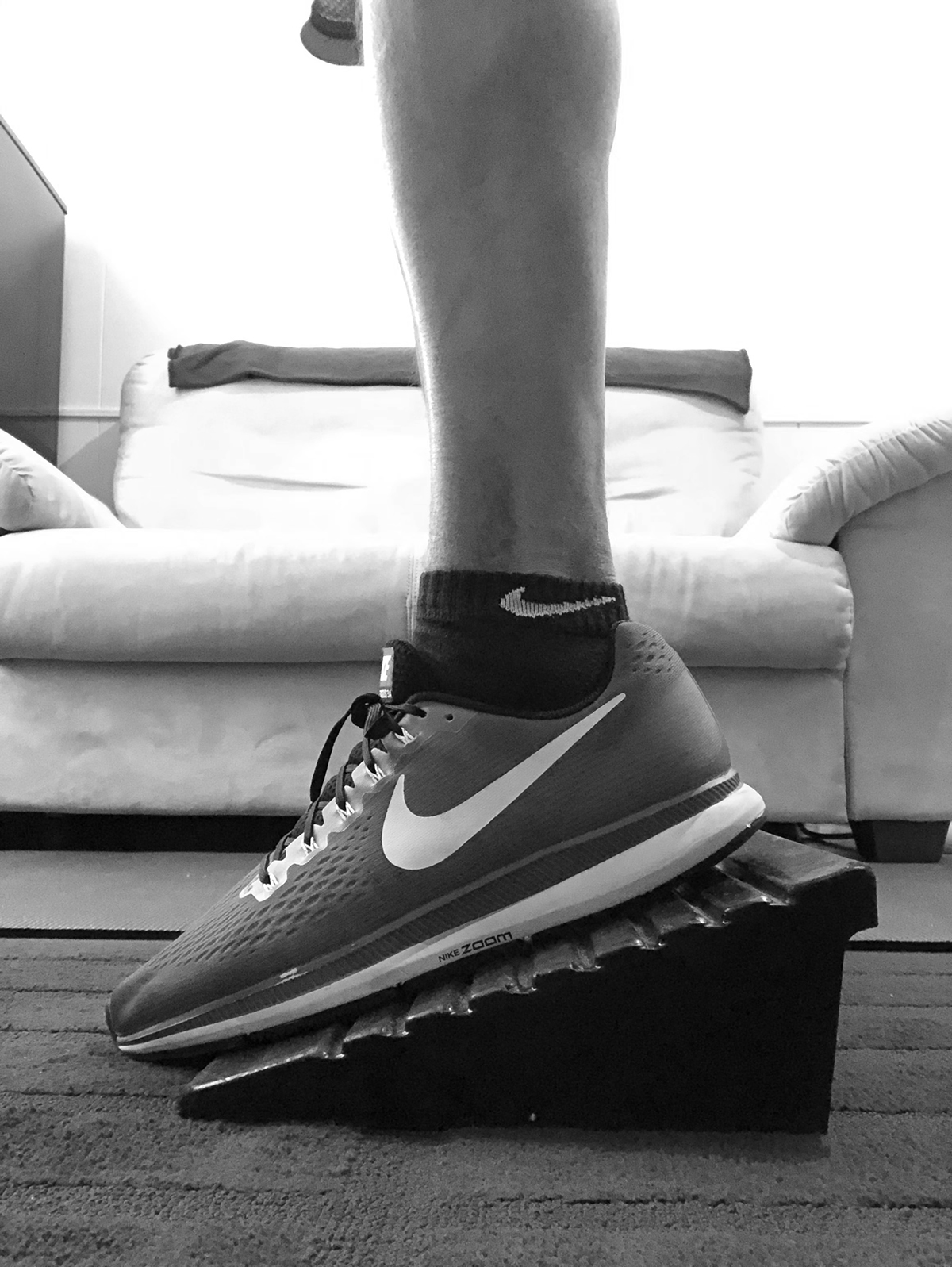A new client of mine, Chris, is a former collegiate athlete. He spent many hours each week running as fast as he could, jumping as high or far as he could, and lifting as much weight as he could with various exercises. These activities made him develop a muscular strategy to push his body weight forward – aka propel – with greater strength and greater efficiency.
Chris asked, “Why do we use a slant boards to elevate my heels on squats?” I replied, “What an awesome question! At the moment we need some help pushing your body weight backwards to achieve our desired movement outcome.” I look of surprise came across Chris’ face, “I need help moving my body weight?!” I chuckled softly, “only in some specific ways… you’re really good at it in other ways… apparently too good.” Chris laughed, “Time to expand my repertoire!” That is exactly right.
The biased forward body weight position Chris, and most people to some degree, experience will trade joint of motion for increased strength production. There is nothing wrong with this. It may be needed and incredibly necessary to perform certain tasks. Problems arise when someone needs to perform activities that require his body weight to move backward and he has lost the ability to move his body weight backward the required amount; this is a loss of the needed joint motion for the task. A few examples where someone’s body weight must translate back some degree would be decelerating and changing direction when running, rotation activities like golf or throwing a baseball, and squatting (the forward leaning, vertical shin variety doesn’t require as much). However, there is not a black and white answer to how much of this body weight shift is needed. It depends on how we want each task to be performed.
We decided Chris was too biased toward his body weight being pushed forward. His assessment showed he was lacking significant hip and shoulder motion, and he reported feeling “stuck” when attempting to demonstrate dynamic activities like squatting. Chris’ goals were to squat lower and without knee discomfort, not feel shoulder pain with upper body exercise, and most importantly, sit on the ground, run, and play with his young son.
Elevating Chris’ heels on a slant board, and having him hold weight in front of his body are a staple of his early program. This position forces Chris to move his body weight backward a greater degree in specific areas of his upper body and hips relative to if his heels were on the floor and/or something like a barbell was on his back to hold external weight. When his body weight pushes backward the muscles on the front side of his body tighten more, and the muscles on the back side of his body loosen a bit. The result, his joints can decrease their bias in one direction, and “align” to positions that have greater range of motion in multiple directions.
Elevating someone’s heels is just an example of how to shift our body weight, and may not be needed for everyone. There are many ways we can alter the executions of exercises to better recapture losses in joint range of motion. The exercise selection and the adjustments depend on the individual needs.
We can continue to monitor Chris’s progress based on regularly re-testing some of the movements from his assessment. This way we can manage his progress gaining motion, or decide to maintain an approximate amount, as he decreases his reliance on the heel elevation, increases intensity, or tackles more complex activities.

